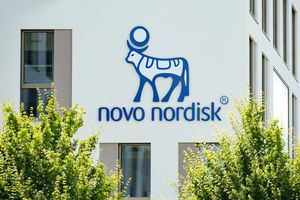
Birmingham, AL – November 19, 2025 – First US Bancshares, Inc. (NASDAQ: FUSB) today announced that its Board of Directors has declared a quarterly cash dividend of $0.07 per share on its common stock, a move that aligns with its previous payout. This consistent declaration underscores the company's commitment to returning value to its shareholders and signals a stable financial outlook in a dynamic market environment. The decision comes as investors keenly watch for signs of corporate health and reliability in dividend distributions.
The reaffirmation of the $0.07 per share dividend, identical to the prior quarter's distribution, is a testament to First US Bancshares' sustained operational performance and prudent capital management strategies. For shareholders, this means a predictable income stream, reinforcing confidence in the company's long-term viability and its capacity to maintain shareholder returns. This stability is particularly noteworthy in the current financial climate, where consistent dividend payouts can serve as a crucial indicator of a company's resilience.
Consistent Payout Reflects Strategic Stability
The dividend, declared on November 19, 2025, is set to be paid on January 2, 2026, to shareholders of record as of December 12, 2025. The ex-dividend date has been set for December 2, 2025. This timeline provides clarity for investors looking to qualify for the upcoming payment. First US Bancshares has a demonstrated history of stable dividend payments, with this latest declaration extending a track record of consistent shareholder remuneration over the past decade. The previous quarterly dividend also stood at $0.07 per share, with an ex-dividend date of September 12, 2025, and a payment date of October 1, 2025.
This sustained payout ratio suggests that the company's earnings are robust enough to support these distributions without hindering its growth initiatives or capital requirements. In an industry often subject to economic fluctuations, a bank's ability to maintain its dividend reflects not only current profitability but also a confident forecast for future performance. Key players involved in this decision include the company's Board of Directors, who are responsible for evaluating the financial health and strategic direction of the institution, and the executive management, who provide the financial data and recommendations that inform such decisions.
Initial market reactions to such a declaration are typically positive or neutral, as consistency often meets market expectations. While a dividend increase might spur a more pronounced positive reaction, maintaining the payout signals reliability, which is a valuable trait for income-focused investors. For First US Bancshares, this move helps solidify its reputation as a dependable investment within the regional banking sector, particularly for those seeking steady income from their portfolios.
First US Bancshares Fortifies Investor Confidence and Competitive Edge
The consistent declaration of a $0.07 per share quarterly dividend by First US Bancshares (NASDAQ: FUSB) serves as a potent signal of the company's robust financial health and stability, with a track record extending over a decade of stable payouts and 44 consecutive quarters of dividends. This unwavering commitment to shareholder returns makes FUSB particularly attractive to income-focused investors, such as retirees, who prioritize a steady stream of passive income. The predictability of these payouts can also contribute to reduced stock volatility, offering a degree of resilience during broader market downturns and positioning FUSB as a more stable investment.
Furthermore, a consistent dividend policy often indicates a mature business model with reliable cash flows, even as FUSB has demonstrated impressive earnings per share (EPS) growth of 15% annually over the past five years. The company's reported dividend payout ratio, ranging from 13% to 29.2%, is considered highly sustainable. This low payout ratio suggests that FUSB retains ample earnings to cover its dividend obligations while also having sufficient capital for strategic growth initiatives and risk management. This balanced approach to capital allocation can potentially lower the company's cost of capital, providing greater flexibility for future expansion and operational enhancements.
Across the regional banking sector, FUSB's stable dividend creates a benchmark and exerts competitive pressure. Other regional banks may feel compelled to maintain or enhance their own dividend policies to attract and retain income-seeking investors, particularly in a market that saw significant turbulence in 2023. A strong, consistent dividend from a regional player like FUSB can also bolster overall investor confidence in the sector, helping to alleviate broader concerns about the stability and profitability. Conversely, regional banks facing greater financial strain might struggle to match such consistent payouts, potentially leading to difficult decisions like dividend cuts, which could negatively impact their market perception and investor confidence. Companies like First Financial Bancorp (NASDAQ: FFBC), known for its dividend growth, exemplify the sector's focus on shareholder returns, a trend reinforced by FUSB's actions.
Wider Significance: A Beacon of Stability in Regional Banking
The decision by First US Bancshares (NASDAQ: FUSB) to maintain its quarterly dividend payout of $0.07 per share carries significant weight beyond the immediate impact on its shareholders, resonating across the broader financial landscape, particularly within the regional banking sector. This consistent action fits squarely into a broader industry trend where financial stability and predictable shareholder returns are increasingly valued, especially after periods of economic uncertainty. In an environment where investors are cautious, a steadfast dividend policy from a regional bank acts as a beacon of reliability.
This move by FUSB could trigger ripple effects among its competitors and partners. Other regional banks, observing FUSB's ability to sustain its dividend, might face increased pressure to demonstrate similar financial fortitude and commitment to shareholder value. This could lead to a sector-wide emphasis on prudent capital management and consistent profitability, as banks strive to match or exceed investor expectations for returns. Conversely, institutions struggling with profitability or capital adequacy might find themselves at a disadvantage, potentially seeing their investor appeal diminish in comparison to more stable peers. The stability offered by FUSB also indirectly benefits its partners by fostering a more predictable and trustworthy financial ecosystem.
From a regulatory standpoint, consistent dividend payouts from regional banks like FUSB can be viewed favorably by supervisory bodies. It suggests sound financial management, adequate capital reserves, and a sustainable business model, all of which contribute to the overall stability of the financial system. While there are no immediate new regulatory implications directly tied to FUSB's dividend maintenance, it reinforces the narrative of a healthy banking sector, which could influence future policy discussions around capital requirements and stress testing for regional institutions. Historically, banks with strong, consistent dividend records have often been perceived as less risky and more resilient during economic downturns, a precedent that FUSB continues to uphold.
What Comes Next: Navigating a Dynamic Banking Landscape
The consistent dividend declaration by First US Bancshares (NASDAQ: FUSB) positions the company for both short-term stability and long-term strategic evolution within a complex regional banking environment. In the immediate future, shareholders can anticipate continued returns, building on a robust history of 46 consecutive quarterly payments and 12 years of consistent dividends, alongside a notable 40% dividend growth over the past twelve months. The company will need to skillfully navigate the evolving interest rate environment; while declining rates could pressure Net Interest Income if deposit costs remain high, they are also expected to stimulate asset quality and loan demand, potentially benefiting FUSB. However, the broader regional banking sector faces ongoing earnings pressures from margin compression and slowing growth, a trend evidenced by FUSB's Q1 2025 revenues falling 3.30% to $14.89 million and its EPS coming in below analyst estimates.
Looking further ahead, the regional banking sector is ripe for accelerated mergers and acquisitions (M&As), which could present significant opportunities for FUSB to expand its footprint or capabilities, or even become an acquisition target itself. The aggressive adoption of AI and automation also offers a pathway to substantial long-term efficiencies and new revenue streams, driving a tech-driven transformation. To capitalize on these opportunities and mitigate emerging challenges, FUSB will likely need to implement several strategic pivots. This includes embracing advanced digital capabilities, such as AI and machine learning for enhanced customer experience and risk management, and exploring fintech integrations to expand service offerings. Proactive management of Commercial Real Estate (CRE) loan exposure, which remains a significant concern across the sector, and fortifying cybersecurity measures will be critical for risk mitigation.
Market opportunities such as a steepening yield curve, which typically benefits banks, and a potentially undervalued regional banking sector could emerge. The reduced competition following the 2023 banking crisis and anticipated increases in loan demand with potential interest rate cuts also present avenues for growth. However, significant challenges persist, including the potential for a severe CRE crisis, ongoing Net Interest Margin pressure from high funding costs, intense competition from nimble fintech firms, and the burden of evolving regulatory requirements like the Basel III Endgame re-proposal. FUSB's ability to maintain its local authenticity while optimizing customer experience and pursuing strategic growth paths will be crucial. Potential scenarios range from a "cautiously confident" resilience where bad loans remain manageable, to a "CRE contagion" downside risk, or a "tech-driven transformation" upside scenario that could drive stronger dividend growth and stock appreciation.
Comprehensive Wrap-up: Steadfastness in a Shifting Market
First US Bancshares' (NASDAQ: FUSB) declaration of a consistent $0.07 per share quarterly dividend stands as a powerful testament to its financial stability and unwavering commitment to shareholder returns in a continuously evolving financial landscape. The key takeaway from this event is the company's reliability; maintaining such a payout for 46 consecutive quarters and over a decade signals robust operational health and a sustainable capital management strategy, which is highly valued by income-focused investors. This consistency also serves to reinforce investor confidence in the regional banking sector at large, offering a counter-narrative to broader market uncertainties.
Moving forward, the market will assess First US Bancshares' ability to balance its commitment to shareholder returns with the necessity of strategic adaptation and growth. The regional banking sector is at a crossroads, facing both the potential for a wave of consolidation and the imperative of digital transformation. FUSB's continued success will hinge on its capacity to strategically invest in advanced technologies, prudently manage its loan portfolios, particularly its exposure to Commercial Real Estate, and effectively navigate the competitive pressures from both traditional banks and innovative fintech entities.
The lasting impact of this consistent dividend payout is likely to be the reinforcement of FUSB's brand as a stable, reliable investment within the regional banking space. For investors, the message is clear: FUSB prioritizes steady returns while carefully managing its financial health. What investors should watch for in the coming months includes the company's performance in managing interest rate fluctuations, its strategies for digital adoption and efficiency gains, and any indications of M&A activity within the sector. These factors will ultimately determine FUSB's trajectory and its continued ability to deliver consistent value to its shareholders.
This content is intended for informational purposes only and is not financial advice





